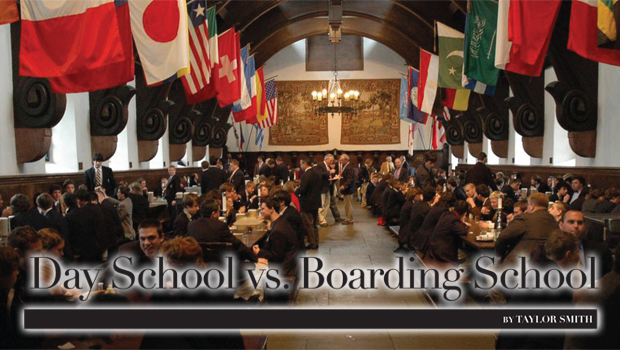Day School vs. Boarding School

By Taylor Smith
At the end of their child’s eighth grade school year, parents are faced with the quandary of where to send their teen to high school. In New York the options are plentiful. Private day school is an attractive option to most since it combines academic rigor with the creature comforts of home. Enrolling as a day student at a local boarding school is also an option. The Millbrook School, Trinity-Pawling School, and the Emma Willard School being three examples.
Some teenagers dream of the pre-college experience that only a boarding school can offer. These teens crave independence, adventure, and the unknown. Knowing their teenager’s strengths, weaknesses, sociability, and adaptability will help parents to decide whether being a day student or a boarding student is right for their child.
Private day schools such as the Dwight-Englewood School, Rye Country Day School, The Greenwich Country Day School and The Nightingale-Bamford School, offer excellent college preparatory experiences. At these schools, students entering the ninth grade will have the option to hand-pick from a diverse assortment of classes, clubs, sports, arts, science, and music programs. Student to teacher ratios are small, which means that most class sizes average 12 students. Guidance from teachers, coaches, and faculty members lend these school a familial atmosphere. In addition, much emphasis is placed on the whole student, so that student happiness is seen as being just as significant as A.P. chemistry scores. As private day students, teens travel locally to compete in athletics and come home at night to have dinner and to sleep in their own beds. Academic demands are strenuous, but the aspects of living at home are an added attraction.
The Northeast, and particularly New England, is home to some of the most elite and picturesque boarding schools in the world. Just visit St. Paul’s School in Concord, New Hampshire during the height of autumn to watch a cross-country meet and be overwhelmed by the history and majesty of the place. Observe new levels of school spirit at an ice hockey match at Avon Old Farms in Avon, Connecticut or watch the spring musical at Deerfield Academy in Deerfield, Massachusetts. All of these experiences will help your teen to decide whether or not they would like to apply.
Applying to boarding school is not unlike applying to college. More often than not, both require campus visits, interviews, teacher recommendations, standardized test-taking and application fees. The application process ideally begins during your child’s seventh grade school year. Go to any school’s website to read about the faculty, facilities, and boarding to day student ratio. Then, plan a road trip. It makes sense to visit when school is in session, between September and May. During this time, you can schedule a student-led campus tour through the admissions office.
If you are not set on one school, it is best to visit as many as you can. There is a high concentration of schools, located relatively close together, stretching from New Jersey to Connecticut and Massachusetts to New Hampshire. You can easily drive from one campus to another over the course of a few weekends. Once you have selected a list of schools, you will have to schedule formal interviews through the school’s admissions office. Interviews are part of the application, so students should remember to dress well, be gracious, and write a thank-you note to each interviewer.
After visiting selected campuses, it is time for paperwork. TABS (The Association of Boarding Schools) developed the uniformed Boarding Schools Admission Application Form to simplify the admission process. Visit www.boardingschools.com to see a list of schools that currently accept the TABS Application. If your school is not on the list, you will have to download that school’s particular application from its website. All of the applications contain a slew of forms that include a student information form, questionnaire, student essays, parent statement, and teacher recommendation forms. The final application must also include a copy of the student’s transcripts/academic records and official SSAT (Secondary School Admission Test) scores. Lastly, you must submit an application fee, which is indicated on each school’s website. If you are applying for financial aid, all forms must be submitted at the same time as the application.
The SSAT is a required test for most private and boarding schools. The Upper Level SSAT test is designed for students in grades six through eight who are applying for matriculation in grades nine through 12. The test includes quantitative (math), reading comprehension, and verbal multiple choice, along with a written essay.
For fall admission, most schools have a January deadline. Keep in mind that all components of the application must be completed and received by this time. Getting the application in before the winter holidays is always a good idea. Notification of acceptance usually occurs in March. Students are asked to notify each school of their final decision by May, at the latest.
Be it at a private day or boarding school, both routes will have a large impact on a child’s personal development and success in college. However, what is most important is that they enjoy the preparatory experience and eventually graduate with positive memories and a greater sense of self.

